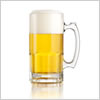Your cart

 USA: Beer market experiencing significant shift towards no-alcohol brands
USA: Beer market experiencing significant shift towards no-alcohol brands
The United States beer market is experiencing a significant shift as traditional beer consumption continues to decline, while the no-alcohol beer segment shows strong growth. Data from IWSR, a leading authority on beverage alcohol trends, reveals that overall beer volumes in the U.S. dropped by 3% in 2024. This decline matches the compound annual growth rate (CAGR) decrease of 3% seen from 2019 to 2024. Projections indicate this downward trend will persist, with another 3% CAGR drop expected between 2024 and 2029, Vinetur reported on June 26.
In contrast, no-alcohol beer is expanding rapidly. In 2024, volumes of non-alcoholic beer increased by 23%, maintaining the same CAGR growth rate observed over the previous five years. This surge translates to a total volume increase of 175% since 2019. IWSR forecasts that this momentum will continue, with an anticipated CAGR growth of 18% through 2029. Among all beer categories in the U.S., only no-alcohol beer and the much smaller stout segment are showing any growth.
Marten Lodewijks, President of IWSR US, attributes the decline in traditional beer consumption to several factors. He points to changing consumer habits, demographic shifts, and competition from other alcoholic beverages such as ready-to-drink (RTD) products. These alternatives have gained popularity due to their convenience and alignment with modern lifestyles. Lodewijks notes that beer once dominated casual and social drinking occasions but has lost ground as consumers seek new experiences.
The rise of no-alcohol beer is linked to broader wellness trends and growing interest in sober lifestyles. More consumers are exploring "sober curiosity," seeking beverages that fit into health-conscious routines without sacrificing social experiences. Breweries are responding by introducing improved formulations and marketing their products as better-for-you alternatives.
IWSR’s US Navigator database tracks beverage alcohol trends across all fifty states and provides detailed insights into the performance of non-alcoholic beer. The data shows that demand for no-alcohol beer peaks nationally during August, with strong sales in June and July. This pattern mirrors general beer consumption trends during summer months, indicating that non-alcoholic options are not limited to "dry January" or post-holiday periods. The lowest sales occur in February and April, likely reflecting a slowdown after the holiday season and dry January campaigns.
State-level analysis highlights California, Florida, Texas, Massachusetts, and New York as the top five states for total no-alcohol beer consumption from 2019 through April 2025. These states accounted for 35% of national volumes in 2024, largely due to their large populations. On a per capita basis, Maryland, Connecticut, Wisconsin, Colorado, and New Jersey lead the way. Wisconsin stands out for its irregular monthly sales patterns and lack of a clear summer peak.
The expansion of no-alcohol beer is also outpacing other non-alcoholic beverage categories in the U.S., supported by both established brands and new entrants from large and small breweries alike. Lodewijks points out that future growth will be driven by several factors: increased availability of draught options in bars and restaurants, more celebrity-owned or endorsed brands entering the market, and greater social acceptance of sobriety.
Ecommerce represents another area of opportunity for no-alcohol beer. While online sales of traditional beer lag behind those of wine and spirits, direct-to-consumer shipping faces fewer regulatory hurdles for non-alcoholic products. This allows brands to reach customers nationwide more easily.
Despite these positive developments for no-alcohol beer, IWSR cautions that its growth will not fully compensate for ongoing declines in full-strength beer consumption. The lager segment remains dominant in the U.S., accounting for over 85% of total beer volumes in 2024. Losses in this category continue to weigh heavily on overall market performance.
The evolving landscape suggests that while no-alcohol beer is providing a much-needed boost to an otherwise shrinking market, it cannot entirely reverse broader consumption trends. The industry’s future will depend on how well it adapts to changing consumer preferences and leverages new opportunities for innovation and distribution.
Назад





